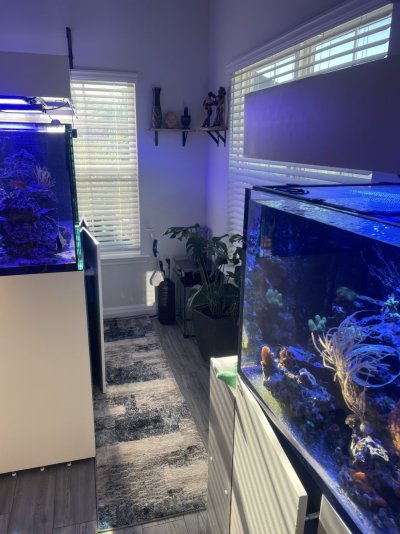I’m wondering if 400 Par natural Sunlight has the same metabolic effect as 400 Par from a typical reef LED
I know corals have a wide tolerance but these lords are getting sun blasted; low December Sun has angled into the window/ tank and pours in for about 1-2 hrs direct.

My MQ210 reads 404 whether pointed up or tangent, is that the upper range for acans?
… granted because the light has increased slowly/ seasonally, it’s not as if the coral is adjusting to a brand overhead new LED
I might cross post over on the LPS forum if I should move these acans, but my main question is I’m wondering if “ wide spectrum” sunlight is tolerated at higher par levels in general for photosynthetic corals ( as opposed to subjecting same corals to 400 PAR readings under a Kessil
Here is the profile of the tank relative to sunlight exposure
I know corals have a wide tolerance but these lords are getting sun blasted; low December Sun has angled into the window/ tank and pours in for about 1-2 hrs direct.
My MQ210 reads 404 whether pointed up or tangent, is that the upper range for acans?
… granted because the light has increased slowly/ seasonally, it’s not as if the coral is adjusting to a brand overhead new LED
I might cross post over on the LPS forum if I should move these acans, but my main question is I’m wondering if “ wide spectrum” sunlight is tolerated at higher par levels in general for photosynthetic corals ( as opposed to subjecting same corals to 400 PAR readings under a Kessil
Here is the profile of the tank relative to sunlight exposure



















